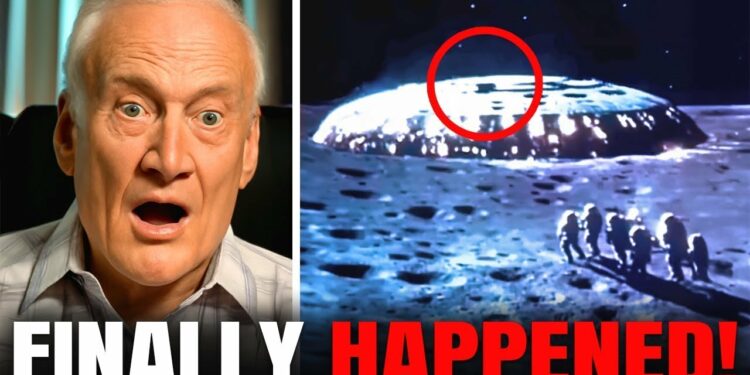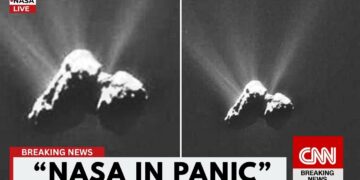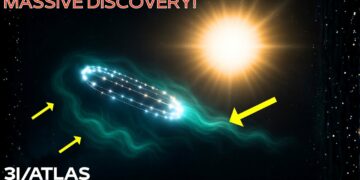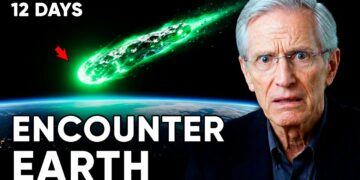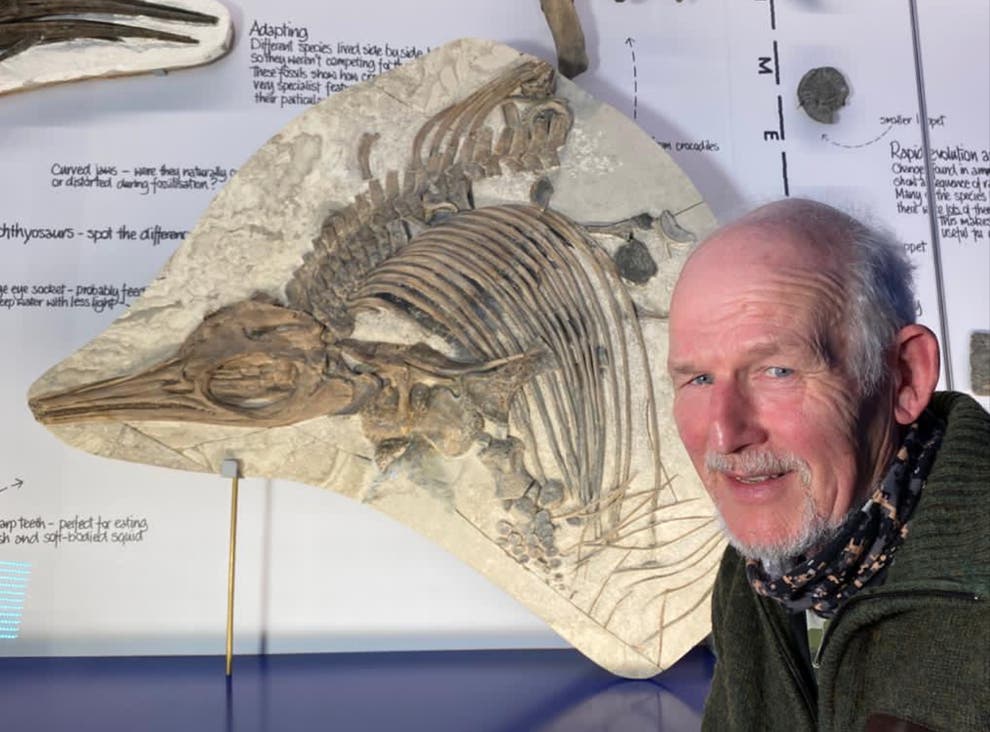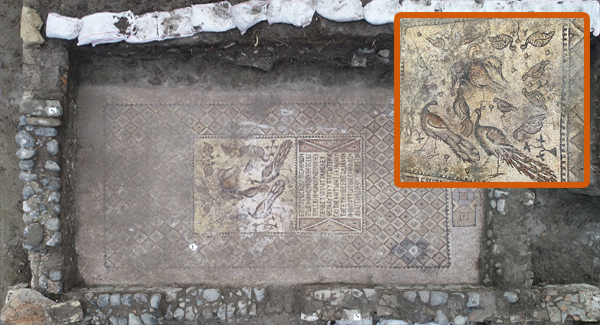Google’s cutting-edge AI, a complex neural network of interconnected systems, was recently put to the test. Initially, it analyzed images from the moon’s surface captured by Chinese unmanned probes a few years ago, confirming their authenticity. However, when fed images from the Apollo missions, the AI flagged them as fake for several reasons, unraveling one of the greatest mysteries surrounding the Apollo program. For decades, rumors have persisted that humans never left Earth for the moon. Now, these startling AI findings are creating shockwaves worldwide. This is no ordinary conspiracy theory—these results stem from advanced systems capable of detecting details missed even by experts. Were the Apollo missions a historic triumph or an elaborate illusion?
The Historical Context of the Apollo Missions
The Apollo program was a bold initiative by the United States to achieve the seemingly impossible: landing humans on the moon and returning them safely to Earth. Conducted in the late 1960s and early 1970s, the program blended scientific ambition with global political rivalry. NASA, the National Aeronautics and Space Administration, led this massive effort. The Apollo missions, particularly Apollo 11 and Apollo 13, remain iconic, though some question whether the entire program was staged. In total, 11 crewed Apollo missions were launched, from Apollo 7 to Apollo 17, excluding Apollo 2 and 3 (which were never officially designated) and Apollo 1, which ended tragically during a launchpad test.
Apollo 11 is celebrated for achieving the first human moon landing on July 20, 1969. Astronauts Neil Armstrong and Buzz Aldrin walked on the lunar surface while Michael Collins orbited above. The event captivated the world, blending awe and fear at the prospect of humans stepping onto another celestial body. The Apollo program built on earlier efforts like Project Mercury, which tested human survival in space, and Project Gemini, which refined techniques like spacewalks and orbital rendezvous critical for lunar missions. By the time Apollo was underway, NASA had mobilized a vast team of engineers, astronauts, and support staff to tackle immense technical challenges, including designing spacecraft to withstand extreme temperatures, radiation, and the vacuum of space. The spacecraft comprised the command module, service module, and lunar module, all of which had to function flawlessly. Despite the program’s successes, doubts about the moon landings emerged even during the missions, and these debates continue today, fueled by new technologies like Google’s AI, which is now reexamining Apollo evidence from a fresh perspective.
The Cold War and the Space Race
The drive to reach the moon was deeply tied to the Cold War, a period of intense rivalry between the United States and the Soviet Union. After World War II, both nations competed to demonstrate superiority in technology and ideology, sparking the space race. The Soviet Union took an early lead with the launch of Sputnik 1 in 1957, shocking the U.S. public and raising fears of falling behind. The Soviets furthered their lead when Yuri Gagarin became the first human to orbit Earth in April 1961. In response, President John F. Kennedy set an ambitious goal in May 1961: to land a man on the moon and return him safely before the decade’s end. This directive shaped NASA’s priorities, channeling billions of dollars into rockets, spacecraft, suits, and training facilities. The moon landing was not just a scientific endeavor but a symbol of national pride and technological dominance in an era dominated by nuclear advancements and global tensions. Some skeptics argue that the intense pressure of the space race gave NASA a motive to stage parts of the Apollo missions to avoid the embarrassment of failure. This historical context explains why suspicions about the moon landings persist, particularly when photos or footage appear questionable to some.
The Official Record of the Apollo Landings
According to NASA, the first moon landing occurred on July 20, 1969, when Apollo 11 touched down in the Sea of Tranquility. Millions watched live as Neil Armstrong stepped onto the lunar surface, declaring, “That’s one small step for man, one giant leap for mankind.” The mission was documented through photographs, television broadcasts, and radio transmissions, with mission control in Houston receiving real-time updates as astronauts conducted experiments, planted the American flag, and collected lunar samples. Following Apollo 11, missions 12, 14, 15, 16, and 17 continued exploring the moon, with achievements like geological surveys and the use of a lunar rover. Apollo 17, in December 1972, marked the last human visit to the moon to date.
NASA’s evidence includes hundreds of pounds of lunar rocks, scientific instruments like retroreflectors for laser ranging, and data from experiments measuring solar wind and lunar structure. Independent ground stations worldwide, including those in non-U.S.-aligned countries, tracked Apollo spacecraft, and the Soviet Union never formally disputed the missions’ authenticity. Lunar rock samples showed chemical compositions distinct from Earth’s, aligning with lunar meteorites. Despite this, skeptics point to details like irregular shadows, missing stars in photos, or perceived inconsistencies in astronaut movements, suggesting these could indicate a staged event. The question remains: could NASA have convincingly faked a moon landing, and were some images or videos mislabeled training footage?
Early Doubts and the Rise of Conspiracy Theories
Skepticism about the moon landings emerged almost immediately after Apollo 11. In the early 1970s, articles began dissecting NASA’s images, and by the late 1970s, Bill Kaysing’s self-published book We Never Went to the Moon fueled doubts. Kaysing, who worked for a company involved in rocket engine production, claimed insider knowledge of a cover-up, though his evidence was largely speculative. Common conspiracy arguments include multiple shadow angles (attributed by experts to uneven terrain and camera angles), the absence of stars in photos (explained by camera settings optimized for the bright lunar surface), and astronaut movements resembling slow-motion or wire suspension (replicated in tests simulating lunar gravity). Crosshairs in photos appearing behind objects have also sparked debate, though NASA attributes this to bright surfaces bleeding over fine camera reticles. Some claim distant hills or repeating patterns suggest stage props, but analysts cite the moon’s unique lighting and terrain as the cause. These theories gained traction through documentaries and online forums, where single frames were scrutinized. Despite NASA’s technical explanations, skepticism persists, with some alleging advanced editing or staged sets, even linking filmmaker Stanley Kubrick to the hoax without evidence. Google’s AI analysis is now seen by some as a potential tool to either validate these claims or confirm NASA’s account.
Google’s AI and Alleged Discoveries
Online discussions claim Google’s AI has uncovered inconsistencies in Apollo mission media, such as irregular lighting, suspicious visor reflections, or repeating lunar patterns. Some suggest the AI detected signs of early film compositing techniques in enhanced Apollo photos, implying edited backgrounds or spliced frames. Conspiracy enthusiasts argue that 1960s technology couldn’t produce certain visuals naturally, requiring cinematic tricks now detectable by AI. However, Apollo supporters counter that anomalies could stem from image restoration, compression, or the limitations of older recording equipment. Without a peer-reviewed report from Google, these claims remain speculative. Rumors of world leaders like Vladimir Putin viewing AI-detected evidence lack verification, and Google has not officially confirmed analyzing Apollo footage. Still, the idea of AI revisiting historical data intrigues many, as NASA itself uses AI for tasks like exoplanet detection. Whether Google or another tech giant will formally scrutinize Apollo media remains uncertain, but the possibility fuels ongoing curiosity.
Joe Rogan’s Perspective and Documentary Influence
Joe Rogan, known for his podcast and MMA commentary, once entertained moon landing hoax theories, influenced by documentaries highlighting gaps in NASA’s footage or unusual visuals. He questioned the physics of astronaut movements and suggested some training footage might have been mispresented as lunar activity. Over time, Rogan’s stance softened after discussions with astronomers and astronauts on his show, who explained lunar photography and debunked conspiracy claims. He acknowledged the Apollo program’s scale, noting the difficulty of maintaining a hoax across thousands of personnel. Documentaries often shape public perception by presenting out-of-context visuals or emphasizing Cold War pressures. While some viewers see deception, others find NASA’s explanations sufficient. Google’s AI analysis could either uncover new anomalies or reinforce NASA’s narrative, depending on the findings.
The Apollo 8 Mystery and Other Anomalies
Apollo 8, launched in December 1968, was the first crewed mission to orbit the moon. Astronauts Frank Borman, James Lovell, and William Anders broadcast live lunar images, but rumors persist about unexplained phenomena, like “campfire-like lights” or flames mentioned in transcripts. NASA denies such claims, attributing them to misinterpretations or reflections. Similar stories surround Apollo 11’s alleged UFO sightings (explained as debris) and Apollo 10’s strange sounds (attributed to radio interference). Conspiracy theorists hope AI analysis of digitized footage could reveal frame-by-frame anomalies, but NASA’s official accounts remain consistent, emphasizing the missions’ success.
Technological Breakthroughs of Apollo
The Apollo program’s success hinged on groundbreaking technology. The Saturn V rocket, developed by Wernher von Braun’s team, remains one of the most powerful rockets ever built, generating 7.5 million pounds of thrust. The Apollo Guidance Computer, though primitive by today’s standards, revolutionized digital flight control. Space suits protected astronauts from extreme temperatures and radiation, while the Deep Space Network enabled communication over 250,000 miles. Scientific instruments left on the moon, like retroreflectors and the Apollo Lunar Surface Experiments Package, provided data on lunar composition and motion. Skeptics question the authenticity of some visuals but don’t dispute the technological advancements, which laid the foundation for modern space exploration.
Modern Tools and Verification Efforts
Recent missions like the Lunar Reconnaissance Orbiter and India’s Chandrayaan program have captured images of Apollo landing sites, showing descent stages, rover tracks, and equipment. Laser ranging experiments using Apollo retroreflectors continue to measure lunar distances, supported by global researchers. Amateur astronomers and high-resolution digitization of Apollo footage reveal details consistent with a lunar environment, like dust patterns and reflections. AI-driven academic projects analyzing Apollo images further support NASA’s narrative by confirming lunar characteristics. These modern tools strengthen the case for authentic landings.
Lingering Questions and Ongoing Debate
Despite extensive evidence, conspiracy theories persist, adapting to new data by claiming it’s fabricated. Google’s AI is the latest chapter in this saga, but no definitive proof of a hoax has emerged. The Apollo missions remain a landmark achievement, sparking fascination due to their historical and technological significance. AI could uncover new insights or reaffirm NASA’s account, but transparency in methodology is crucial. The debate encourages inquiry but risks dismissing solid evidence. The moon landings continue to captivate, driven by their monumental scope and the enduring allure of the unknown.

